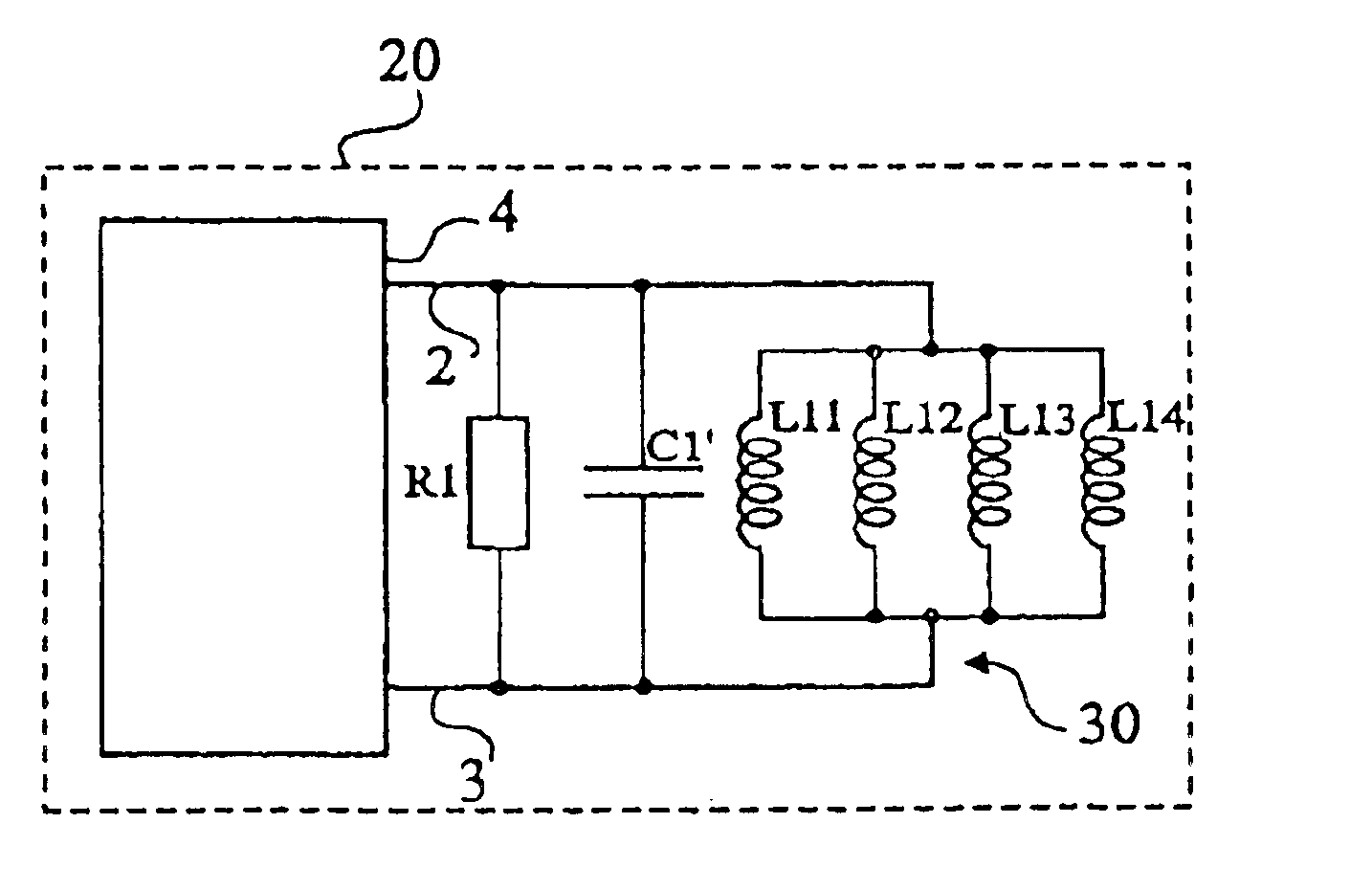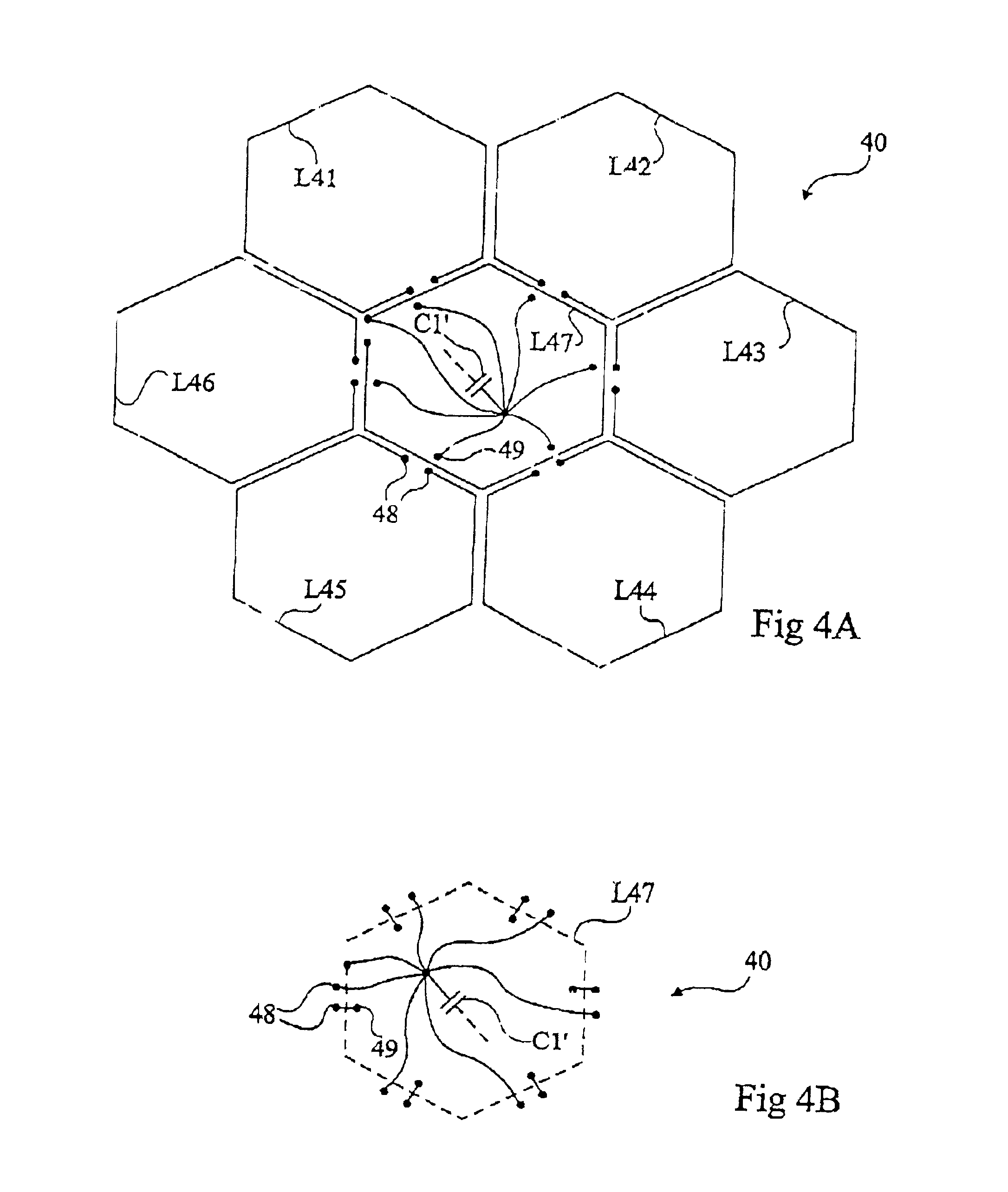Electromagnetic field generation antenna for a transponder
a transponder and electromagnetic field technology, applied in the direction of antennas, burglar alarms by hand-held items removal, antenna supports/mountings, etc., can solve the problems of increasing the necessary system excitation power, insufficient magnetic field to properly remotely supply the transponder, and generally limited range of conventional transponder systems, so as to improve the range and/or the signal level available, optimize the impedance matching, and improve the terminal efficiency
- Summary
- Abstract
- Description
- Claims
- Application Information
AI Technical Summary
Benefits of technology
Problems solved by technology
Method used
Image
Examples
first embodiment
[0039]FIGS. 3A and 3B very schematically show a terminal for generating an electromagnetic field according to the present invention. FIG. 3A illustrates an example of a structural implementation to be compared with the representation of FIG. 2. FIG. 3B shows the equivalent electric diagram to be compared with the representation of FIG. 1.
[0040]A terminal 20 according to the present invention differs from a conventional terminal by its oscillating circuit. For the rest, it includes circuits 4 for controlling, exploiting, and processing data, a base 6, and a support 7 for the antenna, for example, a printed circuit wafer on which are made the conductive tracks forming the antenna.
[0041]According to the present invention, antenna 30 of the oscillating circuit is formed of several coplanar and non-concentric cells or loops, which are placed or formed side by side on support 7, each cell being formed of one or several coplanar concentric turns. Electrically, this amounts to providing sev...
second embodiment
[0051]FIGS. 4A and 4B schematically show, respectively by a view from a first surface and from a second opposite surface, an antenna 40 according to the present invention. The cells are placed in a “honeycomb”. For example, six cells L41, L42, L43, L44, L45, and L46 having the shape of a hexagonal spiral are arranged around a seventh cell L47 also in the form of a hexagonal spiral. Such a structure optimizes the homogeneity of the field lines. FIG. 4A shows, for example, the first surface of a printed circuit on which are formed the different cells of antenna 40 and FIG. 4B shows, for example, the second surface of this circuit enabling obtaining the interconnections. A capacitor C1 is either external or formed in the printed circuit (for example, across its thickness). The two ends of each spiral L41, L42, L43, L44, L45, and L46 and one end of central spiral L47 are connected to vias 48 enabling crossing of the printed circuit. The first ends are connected to a first electrode of c...
PUM
 Login to View More
Login to View More Abstract
Description
Claims
Application Information
 Login to View More
Login to View More - R&D
- Intellectual Property
- Life Sciences
- Materials
- Tech Scout
- Unparalleled Data Quality
- Higher Quality Content
- 60% Fewer Hallucinations
Browse by: Latest US Patents, China's latest patents, Technical Efficacy Thesaurus, Application Domain, Technology Topic, Popular Technical Reports.
© 2025 PatSnap. All rights reserved.Legal|Privacy policy|Modern Slavery Act Transparency Statement|Sitemap|About US| Contact US: help@patsnap.com



